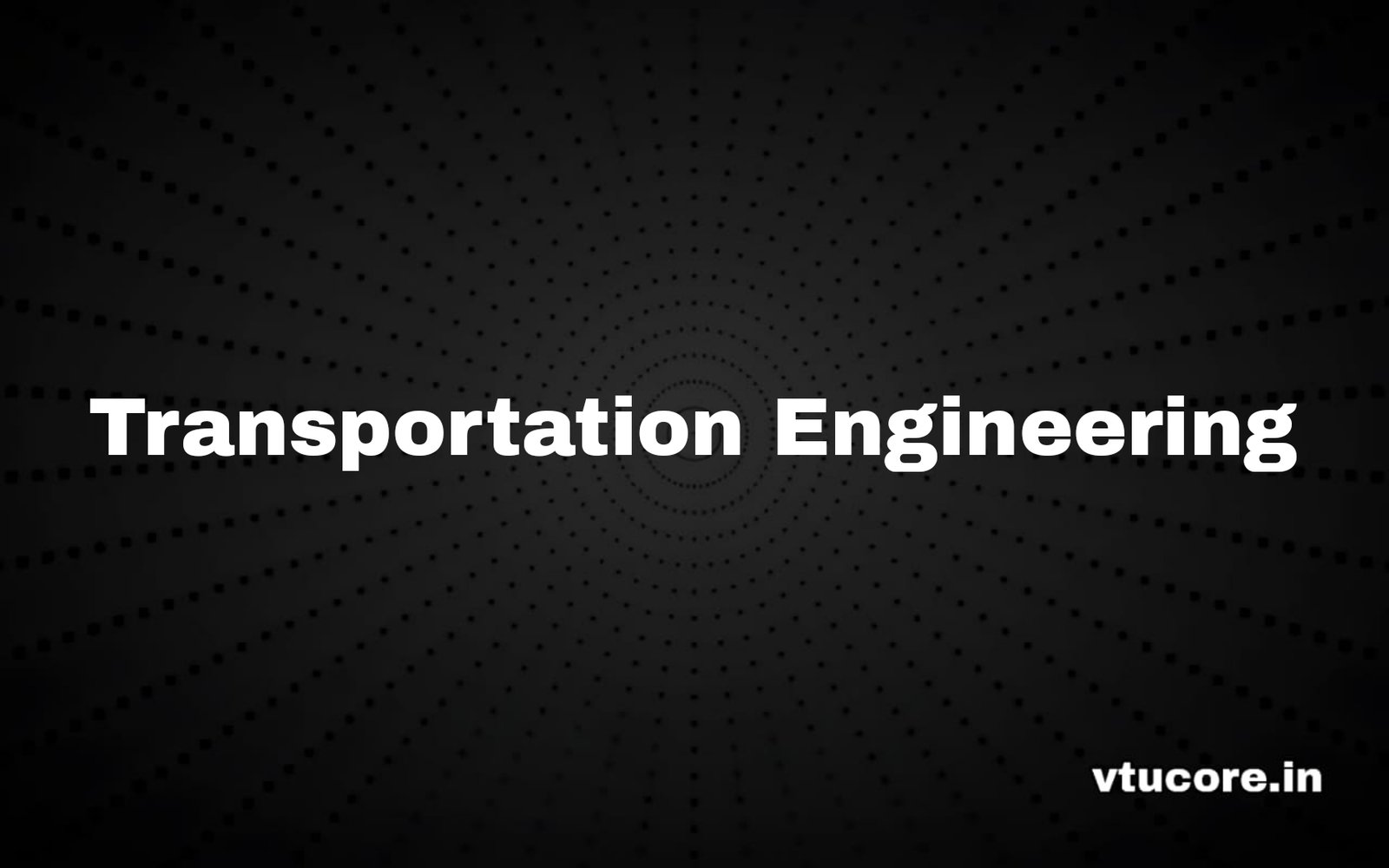Transportation Engineering BCV403
Course Code: BCV403
Credits: 04
CIE Marks: 50
SEE Marks: 50
Total Marks: 100
Exam Hours: 03
Total Hours of Pedagogy: 40 hours Theory + 8-10 Lab slots
Teaching Hours/Weeks: [L:T:P:S] 3:0:2:0
TRANSPORTATION ENGINEERING: Introduction, Different Modes of Transportation, M R
Jayakar Committee recommendations, Road Classifications and Road Patterns.
Highway Alignment: Factors affecting highway alignment, Engineering surveys for alignment conventional and modern methods.
Highway Geometric Design: Factors affecting geometric design of roads, Cross Sectional Elements,
Sight distances, Horizontal alignment- Transition curve, superelevation, Extra widening, Vertical
alignment–gradients, summit and valley curves. (No derivations)
Problems on Sight distance, Super elevation, extra widening of curves, Length of transition
curve, Length of summit and valley curve.
HIGHWAY MATERIALS AND PAVEMENTS: Desirable properties of aggregates, soil subgrade &
Bitumen, Application of bituminous emulsion, Desirable properties of Bituminous Mixes.
Pavement Design: Factors Controlling design of highway pavements, Pavement types, component
parts of pavements and their functions; types of joints used in rigid pavement. Critical stresses in
flexible and rigid pavement.
Highway Drainage: Significance and requirements, Surface drainage system and design-Examples,
sub surface drainage system, Types of cross drainage structures their choice and location.
Problems on design of Longitudinal drain.
TRAFFIC ENGINEERING: Objectives and scope of Traffic Engineering. Traffic Characteristics: Road user characteristics, vehicular characteristics – static and dynamic characteristics, Reaction time of driver and PIEV theory, Types of traffic engineering studies-volume, spot speed, speed and delay, parking, accident, origin & destination, objectives of studies and data collection, method of study, analysis. PCU concept, factors affecting and PCU at different locations and applications. Traffic signs, Signal design by IRC method; Types of intersections. Problems on Spot speed studies, Speed and delay studies, accident studies, Signal design by IRC method.
RAILWAY ENGINEERING: Permanent way and its requirements, Gauges and types, Typical cross sections single and double-line BG track, Coning of wheels and tilting of rails, Rails-Functionsrequirements, types and defects of rails. Sleepers and Ballast: Functions, requirements, Track fitting and fasteners, Calculation of quantity of materials required for laying a track, Points & crossings, Railway Station and Yards. Metro train & high speed train- Design factors considered. Problem on Quantity calculation for laying railway track. Super-elevation
AIRPORT ENGINEERING: Layout of an airport with component parts and functions, Site selection
for airport, Aircraft characteristics affecting the design and planning of airport, Airport classification,
Runway orientation using wind rose with examples.
RUNWAY– Basic runway length-Corrections and examples, Runway geometrics, Taxiway-Factors
affecting the layout – geometrics of taxiway-Comparison between Runway and Highway, Design of
exit taxiway with examples.
Problems on Runway orientation, Basic Runway length, Exit taxiway design.

